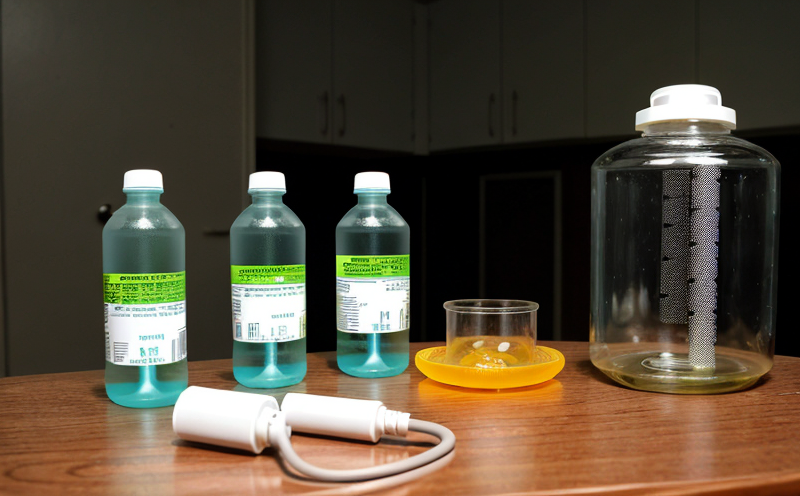ISO 18589-5 Plutonium Determination Test in Water
The ISO 18589 series of standards provides a comprehensive set of methods to determine radionuclides in water, and ISO 18589-5 specifically addresses the determination of plutonium (Pu) isotopes. This test is crucial for ensuring that water supplies meet regulatory limits for radioactive contamination. The method outlined in ISO 18589-5 enables accurate quantification of Pu isotopes, particularly 239Pu and 240Pu, which are key indicators of nuclear fuel reprocessing.
The process begins with the collection of water samples that must be representative of the source being tested. Samples should ideally be collected in high-density polyethylene (HDPE) containers to minimize contamination from other radionuclides and metals. After collection, the samples are typically stored under controlled conditions before analysis. The analytical procedure involves several stages including sample digestion using nitric acid, followed by separation techniques such as liquid-liquid extraction or solid-phase extraction.
The detection of plutonium isotopes is achieved through high-resolution gamma spectrometry after isotopic purification. This method ensures that only the desired Pu isotopes are detected, reducing interference from other radionuclides present in the sample matrix. The accuracy and precision of this test make it suitable for both routine monitoring and compliance testing.
The results obtained from ISO 18589-5 are critical for regulatory bodies like the Environmental Protection Agency (EPA) or European Union Water Framework Directive, ensuring that water sources are safe for human consumption. Compliance with these standards is essential to protect public health and ensure environmental sustainability.
Given the significance of this test in maintaining public safety, it's important to note the role of experienced laboratories like ours. Our team of experts ensures that each step from sample collection to final reporting adheres strictly to ISO 18589-5 guidelines. This includes rigorous quality control measures and the use of state-of-the-art instrumentation to deliver reliable results.
In real-world applications, this test is used in various sectors including nuclear power plants, reprocessing facilities, and water treatment plants. For instance, nuclear power plants must regularly monitor their effluent streams for plutonium contamination to ensure compliance with international standards such as IAEA (International Atomic Energy Agency) guidelines. Similarly, water treatment facilities use this method to verify the effectiveness of their purification processes.
The test's importance is further highlighted by its role in environmental research and remediation efforts. By accurately determining plutonium levels in contaminated sites, researchers can assess the extent of contamination and develop appropriate strategies for cleanup.
Applied Standards
| Standard Code | Description |
|---|---|
| ISO 18589-5:2016(E) | Determination of radionuclides in water—Part 5: Plutonium isotopes by high-resolution gamma spectrometry after chemical separation. |
| IAEA TECDOC-1743 (2019) | Technical Document on the measurement and control of radionuclide contamination in water, air, soil, and foodstuffs associated with nuclear facilities. |
Benefits
- Compliance with international standards for radioactive contaminant testing.
- Enhanced public safety by ensuring water quality meets regulatory thresholds.
- Supports environmental protection and sustainable development initiatives.
- Precise quantification of plutonium isotopes, providing reliable data for decision-making.
- Reduces the risk of legal penalties associated with non-compliance or contamination incidents.
Customer Impact and Satisfaction
- Facilitates informed decisions by providing accurate and timely results.
- Ensures business continuity and operational efficiency for water treatment facilities.
- Maintains a positive reputation through adherence to stringent quality standards.
- Reduces the likelihood of costly remediation efforts due to early detection of contamination.





